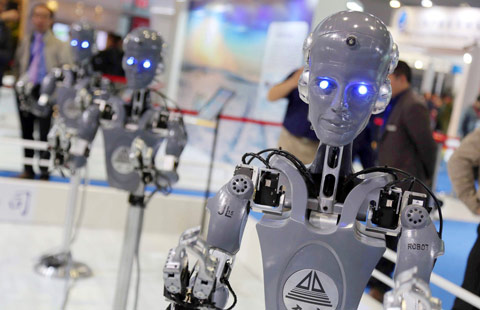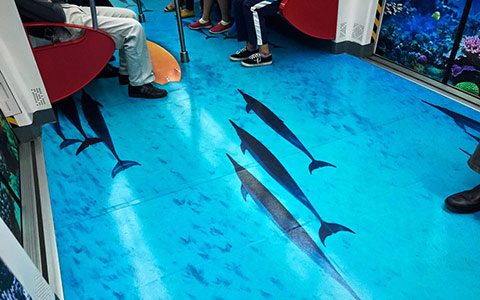
MANNED OR UNMANNED?
China has yet to start a manned deep-space exploration program, and experts hotly debate whether it's necessary to send humans into deep space, or just let robots do the job.
Guo Linli, a researcher with the China Academy of Space Technology (CAST), said humans will inevitably go deeper into space from near Earth orbit to the moon and then to Mars.
"Can robots replace humans to explore deep space? My view is that robots are suitable for repetitive, heavy loading, and fixed and known work. But it needs human wisdom to decide on unknown work that cannot be simulated in lab, such as surveying and choosing a site for a future lunar base," Guo said.
However, such ambitions come with a cost, and the biggest would be for the greatly increased scale of the spacecraft and rockets. It would need a heavy-lift launch vehicle with a capacity of more than 100 tonnes to send four astronauts to the moon, and environmental control and life support systems would be essential too, Guo said.
Compared with unmanned deep space exploration, manned missions would have fewer possible destinations and the cost and difficulties would be much greater. Currently, only the moon, Mars and asteroids are considered, Guo said.
Humans and robots will each have advantages, and will work together in exploring the deep space far into the future.
ASTEROID "ANTS"
In recent years, asteroids have become a focus of international space exploration. Scientists say asteroids hold materials that could unlock the secrets of the birth of the solar system and the origin of life.
Chinese experts are discussing the feasibility of sending a landing probe and retrieve samples from an asteroid.
But how could a probe land and move on an asteroid that might have an odd shape, almost zero gravity and complicated environment?
Zhang Wangjun, a senior CAST engineer, said wheeled robots like the U.S. Mars rover Curiosity have played an important role in space exploration. But robots with feet are more suitable for moving on hilly terrain with many obstacles.
"Robots with feet can avoid and cross obstacles more easily. We are researching two-feet, four-feet and six-feet robots. It seems that a six-feet robot has more advantages in mobility and flexibility in the complicated environment," Zhang said.
This finding echoes those in the United States, Europe and Japan, where researchers have developed robots imitating cockroaches, spiders and ants.
However, he said, current research only meets the industrial requirements. It is still a long way to go to adapting a robot to the environment of an asteroid.
Zhang has devised asteroid-probing robots like a pair of "ants" that can work independently or cooperatively.








